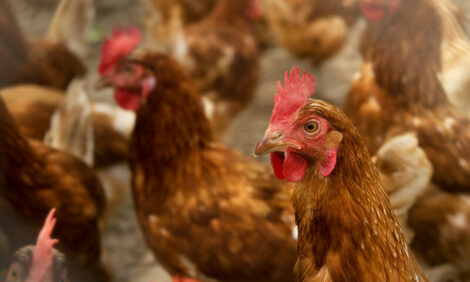



Producers Could be Winning Battle Against Marek’s Disease
US - The virulence of Marek’s disease virus may have plateaued, according to a recently completed research project at the USDA Agriculture Research Service in East Lansing, Michigan.The project was funded by USPOULTRY and the USPOULTRY Foundation as part of their research programme encompassing all phases of poultry and egg production and processing. A brief summary of the completed project is shown below.
Dr John Dunn and colleagues at the USDA Avian Disease and Oncology Laboratory focused on the continued evolution of the Marek’s disease virus (MDV).
MDV, which causes tumors in chickens, has a long history of continuous evolution toward increased virulence in the field, which has required the continued development of more effective vaccines.
Dr Dunn has completed the first survey of current MDV field viruses since 1997, and it has been 15 years since a comprehensive set of Marek’s disease virus (MDV) field strains have been solicited from poultry companies for pathotyping.
Although Marek’s disease (MD) condemnation rates in broilers have been dropping, there has also been increasing use of the highly protective Rispens vaccine in both broiler and layer operations, which researchers previously thought might be masking an increase in virulence of circulating MDV field strains.
Based on recent work that suggests MDV can evolve unnoticed in resistant birds, they hypothesised that field strains of MDV could have evolved towards greater virulence in recent years despite the reported current disease incidence.
However, they found, surprisingly, that the virulence of MDV in the US poultry industry may have plateaued.
They was not able to find MDV from current field cases that were any more virulent than viruses from 20 years ago. This is good news for the industry and may indicate that current management and vaccine programs have had a big positive impact.
It is possible that the Rispens vaccine protects in a different manner compared to serotype 2 and 3 MDV vaccines that may result in reduced rates of MDV evolution.
The researchers also looked at whether genomic sequences of the viruses could be associated with their pathotype or location of origin.
Although MDV genomic sequences were found to be associated with pathotype, this association was not perfect, which likely reflects the complex nature of the underlying biology. Nonetheless, these results suggest that one could use DNA sequencing as a first step to help filter and identify which MDV strains should be pathotyped further using traditional methods.
The close relatedness of strains isolated over several years from the same farm suggests the ease that viruses can persist and spread between flocks, and the difficulty in eradicating the virus from a farm when established as the most virulent strain.
The inability to isolate viruses significantly more virulent than the old strain suggests that current management and vaccine practices have slowed the evolution of MDV.











